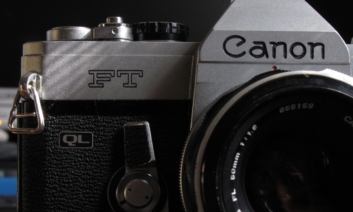Tag: Canon FT QL
-
Canon FT QL mirror damper replacement
I thought I’d make my first post about some work done on my favourite camera: my dad’s old Canon FT QL. This fully mechanical SLR was built from 1966-72. It has through-the-lens metering (the only electrical function) and a nifty Quick Load system for film insertion (honestly not sure why it’s not ubiquitous in later…
